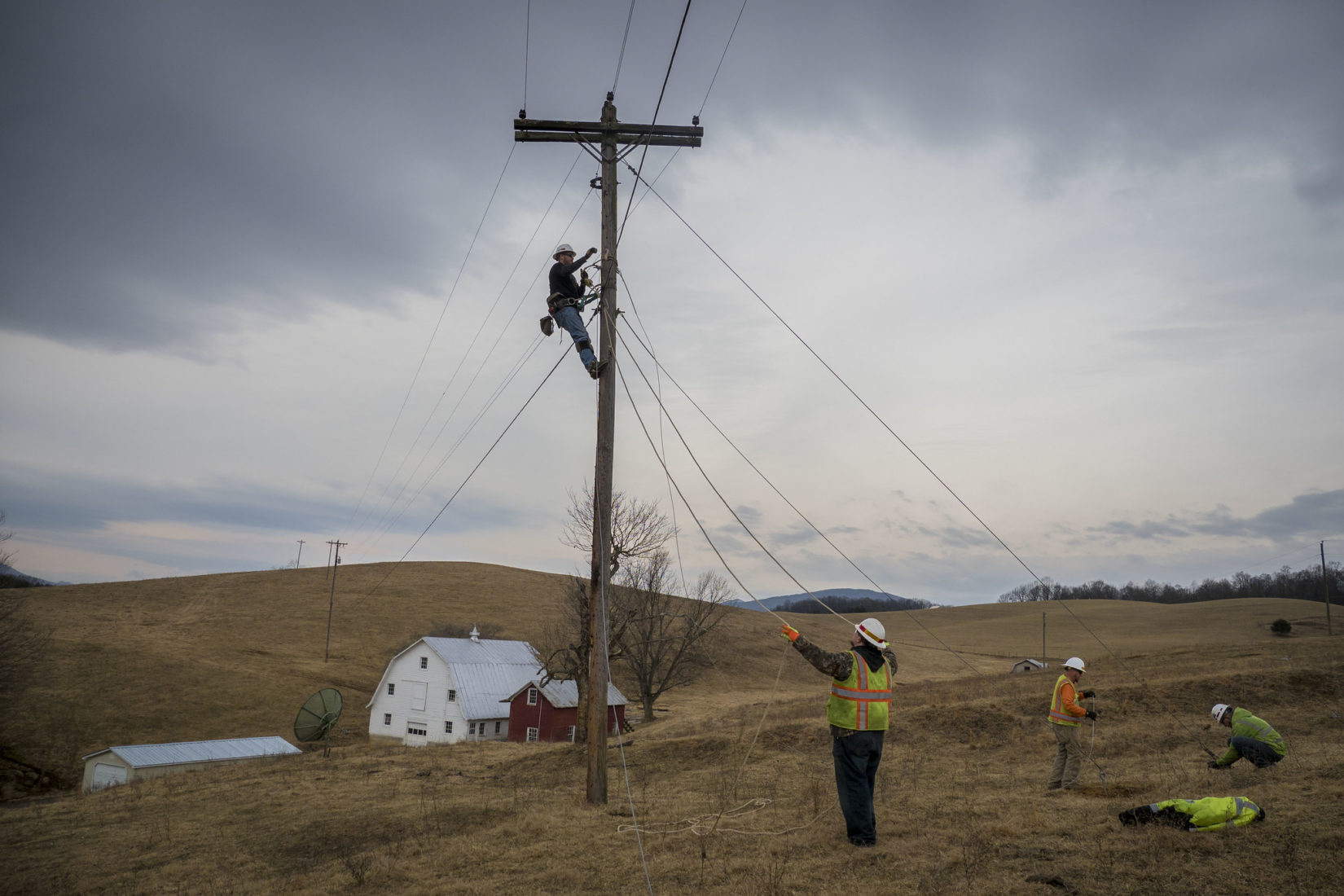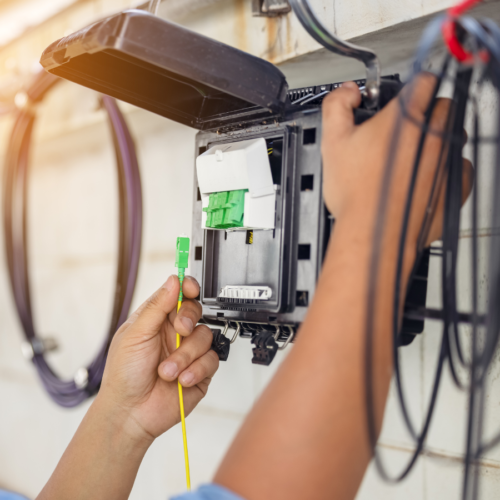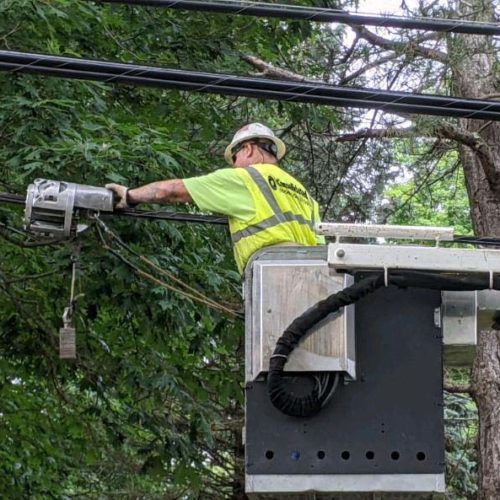Rural Broadband Policy Summit
By Carolyn Partridge
This article was published by the Brattleboro Reformer on May 5, 2019. Below find links to presentations at the Rural Broadband Policy Summit.
Last Friday and Saturday I had the opportunity to travel with Rep. Laura Sibilia to Wilmington, Delaware, for an event sponsored by the Agriculture and Rural Affairs Committee of the Council of State Governments Eastern Regional Conference. It was a policy summit titled “Rural Broadband — Bridging the Connectivity Divide,” and since I co-chair the committee, I was fortunate to facilitate it.
While most attendees were fairly familiar with the topic, we started off with a presentation called “Broadband 101, Part 1,” which served as a good introduction to the subject matter and terminology. The presenter was Debra Socia of Next Century Cities and aside from the basics, she talked about the rural disadvantage and why it is important. (See link below)
This was followed by a panel that briefed us on what technologies are available and the advantages and disadvantages of each of them. Robert Koester, Executive Vice President of Consolidated Communications, talked about copper and fiber optics systems and Christina Mason, the Vice President for Government Affairs of the Wireless Internet Service Providers Association, discussed wireless systems.

Virginia's BARC Electric Cooperative leads the way in the Lexington, Va. area installing fiber optic cables to the existing electrical grid, which will bring dependable high-speed broadband to the area for the first time. Rural areas where business and residential consumers use broadband service are more likely to enjoy higher incomes, lower unemployment rates and stronger growth than those without broadband. Because broadband offers rural areas connectivity to business, education, health care and other services necessary for economic growth, it is rapidly becoming indispensable in all sectors of the economy. Rural electric co-operatives across the country are increasingly involved in rural broadband deployment. There is growing concern about the lingering urban-rural broadband divide and who will work to deliver broadband to rural communities. USDA Photo by Preston Keres.
The presentation that gave the most practical, constituent-based view was done by Craig Settles who is the Director of Communities United for Broadband and hosts the radio talk show “Gigabit Nation.” He conducts needs analyses with community stakeholders who want broadband networks to improve economic development, health care, education, and local government. What Mr. Settles did was put the whole picture in sharp focus as to why broadband is no longer a luxury, but a necessity in today’s world. As a stroke survivor, his experience with the health care system was firsthand.
On Saturday, we got started with “Broadband 101, Part 2,” which focused on speeds, bandwidth, and data mapping. Brent Legg, Vice President of Government Affairs for the non-profit, Connected Nation, is responsible for leading the development and implementation of Connected Nation’s public policy and government affairs strategy to close the digital divide across the United States. His focus was on mapping. (See link below) He spoke at length about the shortcomings and inaccuracies of the mapping that has been done, especially in rural areas, and how the data paint a rosier picture than actually exists. We, in Vermont, are familiar with that scenario.
We then had a panel of case studies with presentations from several states, including Delaware, Massachusetts, New Hampshire, and Vermont. Rep. Laura Sibilia, who is Vice Chair of the House Energy and Technology Committee, described the situation in Vermont and some of the frustrations we’ve experienced as we attempt to bring broadband and cell coverage to “last mile” customers.
Laura described a situation with a constituent who is physically disabled and had recent surgery. She lives a half an hour away from any emergency services and her phone wasn’t working. She was told that she might have to wait for up to ten days to get it repaired and there is no other phone or internet service in her area. When Laura brought this up with the CEO of the company, his response was “Why doesn’t she move?” Seriously?! A physically disabled, recently post-operative woman should move because the phone company can’t get there in a timely manner? I wonder who would buy her house under the circumstances.
Funding seems to be one of the big challenges with providing broadband to the last mile That was covered by Chad Rupe, who is Acting Administrator for USDA Rural Utilities Service, and Tom Coverick, Managing Director of KeyBanc Capital Markets. Mr. Rupe informed us about the ReConnect Program, which is a pilot program that offers federal financing and funding options in the form of loans, grants, and combinations of the two to facilitate broadband deployment to areas in rural America that don’t have sufficient access to broadband. For more information about the ReConnect Program, go to https://www.usda.gov/reconnect. Tom Coverick shared his expertise in banking and said something that I found surprising and confounding — investors don’t consider broadband to be a necessity in today’s world. (A link to his presentation is below)
I likened the situation with broadband to that of getting electricity to the Town of Windham. While I did not live in Windham at the time, in fact, I was just being born, the town did not get electricity until 1948 or 1949 — I’ve heard different stories about the actual year. Keep in mind, the Lower East Side of New York City was the first beneficiary of the Edison Illuminating Company when in September of 1882, the lights went on. Sixty-seven years later, Windham finally got electricity.
Why did it take so long? I believe it was a business decision based on the potential return on investment. Windham had comparatively few residents at the top of a steep hill and the cost to install the infrastructure was not offset by the income that could be realized from the residents. In the end, it was the Vermont Electric Cooperative that came up the hill from West Townshend.
I remember Margaret Woodruff telling me that, at the time, she was a young mother with several children when the news arrived that electricity would be coming up the hill. She recalled saving the money for and buying a washing machine so the day the power line was attached to her house she was ready to plug it in.
I had several major takeaways from the policy summit. 1) Mapping is incredibly important. It needs to be accurate and at this point, in many cases, it isn’t. Major assumptions and decisions are being made regarding our need for service — it needs to be correct or we are being shortchanged. 2) Our copper infrastructure is deteriorating, and companies don’t necessarily want to repair or replace it. If you have a landline that gets crackly or doesn’t work when it rains or is windy, it’s probably an indication of that aging. 3) Large companies want to develop where there is a guaranteed return on investment, which is understandable but frustrating because broadband has really become a necessity in today’s world. 4) Ultimately, the large companies do not want to relinquish control because the data are valuable.
On another note, recently, there has been a lot of discussion regarding the potential health effects of 5G service. I think it’s safe to say that 5G will not happen in Vermont for a very long time, if at all. And if it does, it will be in Burlington and maybe some other larger towns.
As always, it was good to return to Vermont, though driving home from the Burlington airport on Saturday night was discouraging — as I drove into Windham it was spitting snow. The good news is that as I returned to Montpelier Monday night, the State House lawn had greened up, the skating rink was dismantled, and the tulips on the east side of the State House were blooming. Hopefully, spring is finally on its way.
State Rep. Carolyn Partridge , D-Windham-3, welcomes emails at cpartridge@leg.state.vt.us. The opinions expressed by columnists do not necessarily reflect the views of the Brattleboro Reformer.
Below are links to PowerPoint slides presented by our fantastic slate of speakers – From our host state of Delaware, CIO Jim Collins, Sen. Brian Pettyjohn, Hon. Gary Simpson, and Congresswoman Lisa Blunt Rochester. Also Deb Socia and Cat Blake (Next Century Cities), Tom Coverick (KeyBanc), Brent Legg (Connected Nation), Hon. Steve Kulik (Massachusetts), Christina Morgan (WISPA), Chad Rupe (USDA Rural Utilities Service), Rob Koester (Consolidated Communications) Reps. Lucy McVitty Weber (New Hampshire) and Laura Sibilia (Vermont). We want to thank them all for sharing their time and experience with us. And special thanks to Rep. Carolyn Partridge, committee chair, who so deftly moderated the policy summit. – Tara Sad and Bob Haefner, CSG-ERC Agriculture and Rural Affairs Policy Consultants
For the presentation by Tom Coverick of KeyBank, click here.
For Deb Socia’s Presentation, Broadband 101, click here.
For Steve Kulik’s presentation on broadband in Massachusetts, click here.
For Brent Legg’s presentation from Connected Nation on broadband mapping, click here.
For Jim Collins’ presentation on what the State of Delaware is doing to bridge the connectivity divide, click here.
For Cat Blake’s presentation on “What Can States Do?”, click here.





